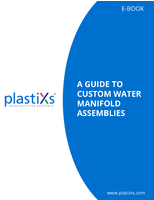New Infrared-Preheat Vibration Welding Technology from Dukane Minimizes Particulate and Flash
Press Release Summary:

Dukane’s new Infrared-Preheat Vibration Welding System uses Servo control technology. Its infrared-preheat vibration technology uses quartz bulb emitters that work in 2-4 Micrometer wave-lengths. These wavelengths work with many plastic absorption wavelength ranges and evenly heat around sharp corner transitions. The sources are covered with metallic shields for bulb protection and provide non-contact and low-particulate plastic welding. The Servo driven lift table provides precise and consistent weld results. The IR pre-heat carrier can be added to standard vibration welding tool designs and can be quickly changed in and out of machines allowing the use of IR or non-IR tools in one machine.
Original Press Release:
New Infrared-Preheat Vibration Welding Technology with Servo Control
New Infrared-Preheat Vibration Welding Technology with Servo Control
Dukane, St. Charles, IL introduces Infrared-Preheat Vibration Welding System with Servo control technology. This system provides all the benefits of Dukane’s vibration welding technology while minimizing particulate and flash. Dukane infrared-preheat vibration technology uses quartz bulb emitters. These emitters work in the 2-4 Micrometer wave-length. Quartz IR emission wavelengths match perfectly with the many plastic absorption wavelength ranges. Quartz bulb style emitters evenly heat around sharp-corner transitions. These Infrared sources are covered with metallic shields for bulb protection and provide non-contact and low-particulate plastic welding.
Servo driven lift table provides precise control and consistent weld results. Dukane’s tool design experts can easily add the IR pre-heat carrier to standard vibration welding tool designs. IR tooling can be quickly changed in and out of machines like standard vibration tooling allowing the use of IR or non-IR tools in one machine. Tooling ID enables or disables IR function. This technology can follow complex 2D & 3D forms and joins thermoplastics, polyethylene, PVC, polypropylene, composite reinforced plastics, polyamides PC, PCABS.
This system provides design flexibility to engineers and produces aesthetically pleasing plastic parts by reducing particulate and flash.




